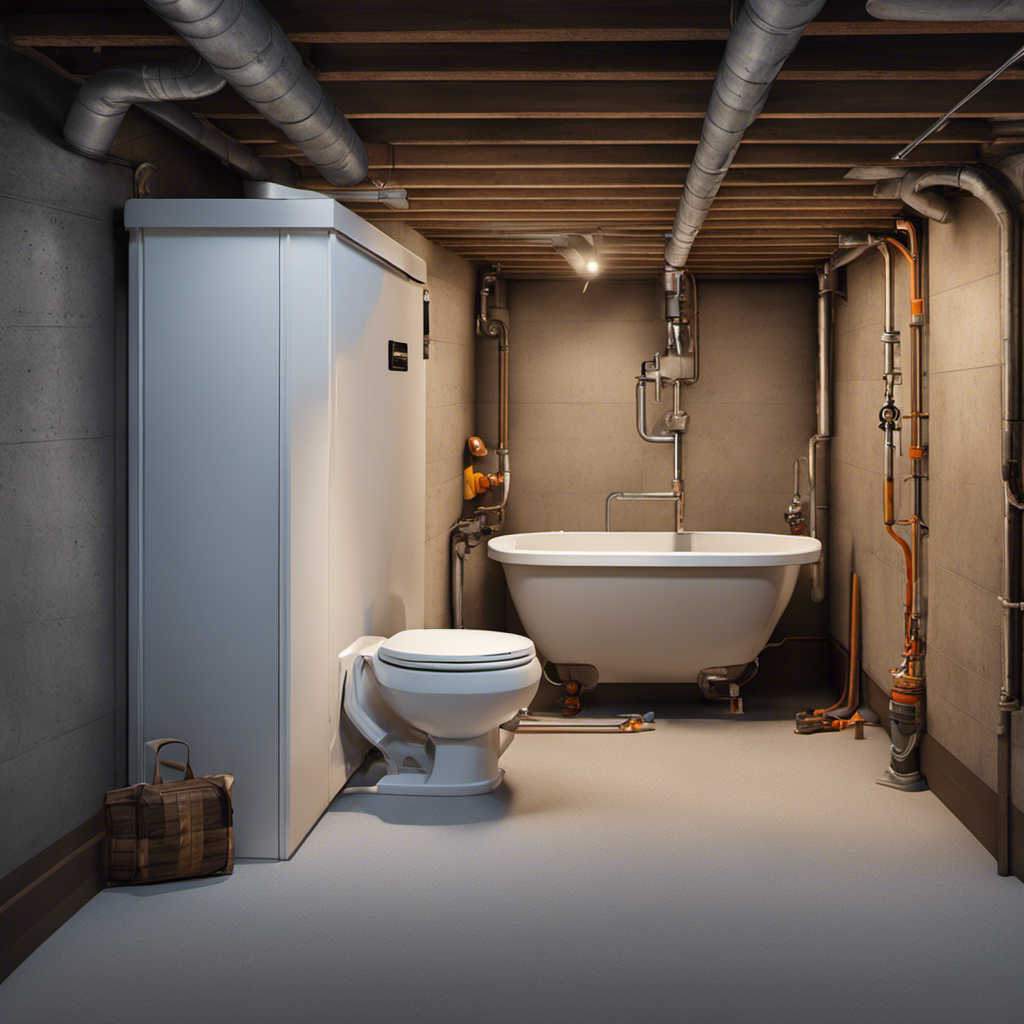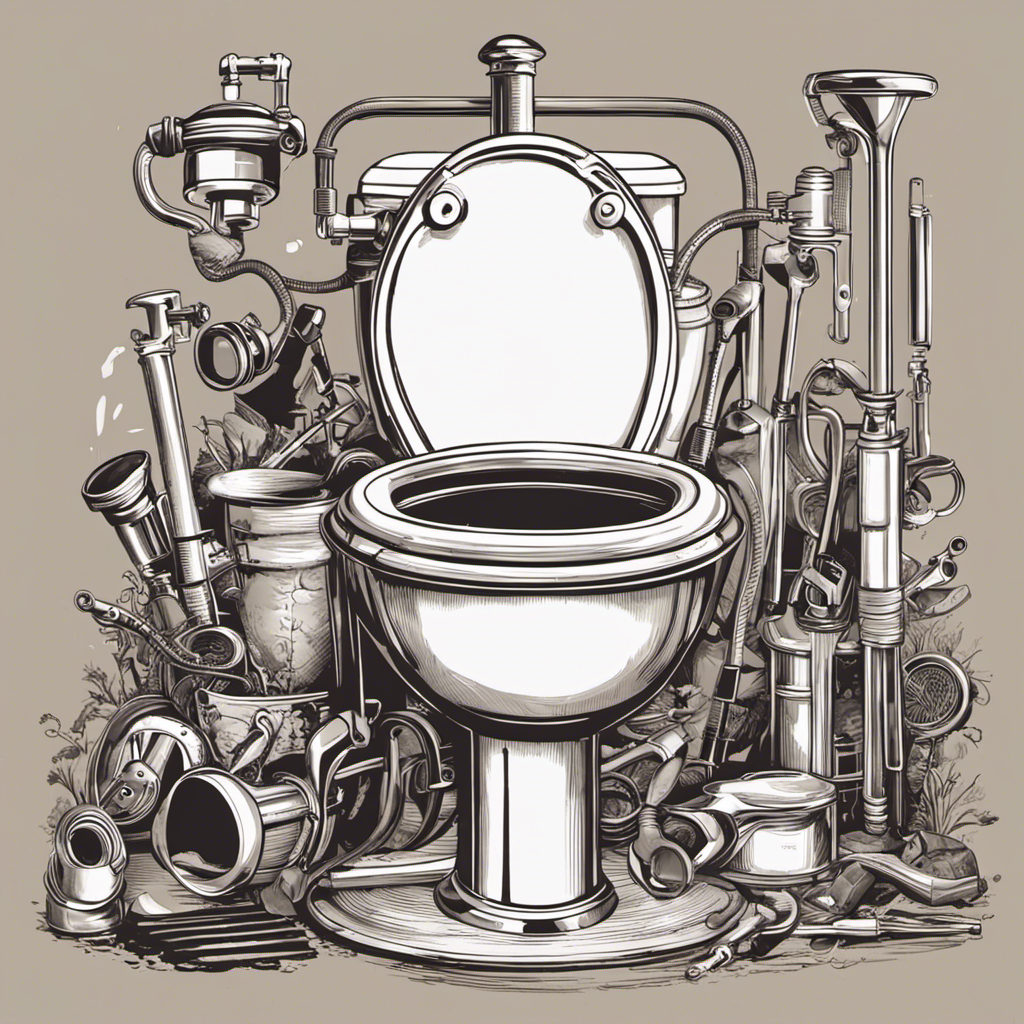I’ve always considered myself a DIY enthusiast, but when it came to installing a toilet in my basement, I quickly realized the challenges that awaited me.
Locating the main water line, dealing with gravity, and breaking through concrete floors were just a few of the obstacles I faced.
Thankfully, I learned about alternative solutions like upflush toilets and composting toilets that didn’t require traditional plumbing connections.
In this article, I’ll share the challenges I encountered and the solutions I discovered for a successful basement toilet installation.
Key Takeaways
- Main water line may not be located in the basement
- Upflush toilets and composting options are unique solutions
- Bathroom experts can provide guidance on alternative options
- Installing a toilet below the main water line is possible
Common Challenges in Basement Toilet Installation
One common challenge in basement toilet installation is the location of the main water line, which may not be in the basement. Overcoming water line challenges can be a complex task, especially if it involves concrete work.
In such cases, it is advisable to hire a professional who specializes in concrete work to ensure the job is done correctly. Professionals have the expertise and equipment necessary to break through the concrete and access the main water line without causing damage to the surrounding area.
Overcoming Basement Plumbing Obstacles
I had to carefully navigate the obstacles of basement plumbing in order to successfully install the toilet. Here are some basement plumbing considerations and DIY basement toilet installation tips that helped me overcome these challenges:
-
Know the location of the main water line: The main water line may not be located in the basement, so it’s important to locate it before starting the installation process.
-
Consider alternative toilet options: Upflush toilets and composting options are unique solutions that can be used in basements where traditional plumbing connections are difficult or not feasible.
-
Seek guidance from bathroom experts: If you’re unsure about the best approach for your basement toilet installation, consulting with bathroom experts can provide valuable guidance and alternative options.
-
Be prepared for concrete work: Installing a toilet below the main water line in the basement may require breaking concrete floors to access drain lines. This task requires advanced DIY skills and is not recommended for beginner home improvers. In some cases, hiring a professional may be necessary for concrete-related tasks.
Alternative Solutions for Basement Toilet Installation
After carefully considering the unique circumstances of my basement, I realized that alternative options for installing a toilet were worth exploring.
Upflush toilets and composting options are two solutions that can be considered when traditional plumbing connections are not feasible or breaking concrete is not desirable.
Upflush toilets function similarly to regular toilets, but the waste is pumped to a special disposal unit behind the toilet. These toilets take up minimal space and can easily be installed by connecting the drainage and attaching the toilet to the macerator.
On the other hand, composting toilets do not require plumbing connections at all. They compost human waste in a low-cost, low-maintenance manner, eliminating the need for sewage. Assembly is simple, involving sliding the pieces together and adding a carbon additive.
These alternative options provide flexibility and convenience for basement toilet installation.
Step-by-Step Guide to Installing a Basement Toilet
Locating the rough-in and plumbing connections is the first step in installing a basement toilet. Here are some preparation tips and troubleshooting common issues to consider:
-
Measure the rough-in: The rough-in is the distance between the wall and the center of the drain pipe. It’s usually between 10 and 14 inches. Make sure to measure accurately to ensure a proper fit.
-
Check the water supply pipes: The water supply pipes are typically located behind the drain. They’re usually around nine inches above the floor. Ensure that they’re in good condition and properly connected.
-
Adjust the flange if needed: The flange connects the toilet to the drain pipe. If the flange is installed too high or too low, it can cause issues with the toilet’s installation. Adjust it to the correct height before proceeding.
-
Turn off the water supply: Before starting the installation, always turn off the water supply to prevent any flooding or accidents. Follow the proper safety precautions and consult with professionals if needed.
Tips and Tricks for a Successful Basement Toilet Installation
Before starting the process, it’s important to ensure that the flange is adjusted to the correct height to avoid any installation issues. Proper plumbing considerations are crucial for a successful basement toilet installation. When deciding between a DIY or professional installation, there are a few factors to consider.
DIY installations can save costs, but they require advanced skills and knowledge. It’s important to have the right tools and follow the installation guidelines carefully. However, if you lack the necessary skills or are unsure about the process, hiring a professional plumber may be the best option. They have the expertise to handle any challenges that may arise during the installation process.
To help you make an informed decision, here is a comparison table highlighting the key differences between a DIY and professional installation:
| DIY Installation | Professional Installation |
|---|---|
| Requires advanced skills | Expertise and experience |
| Cost-effective | Higher cost |
| Time-consuming | Efficient and timely |
| Potential for mistakes | Guaranteed quality work |
| Limited warranty | Warranty and support |
Frequently Asked Questions
What Are the Common Challenges in Basement Toilet Installation?
Common challenges in basement toilet installation include locating the main water line, dealing with gravity if the main line is above the basement level, and breaking concrete floors. Upflush toilets and composting options provide solutions for plumbing obstacles.
How Can I Overcome Plumbing Obstacles When Installing a Basement Toilet?
To overcome plumbing obstacles when installing a basement toilet, I recommend using proper plumbing techniques such as locating the rough-in and adjusting the flange. Troubleshooting common issues like leaks and blockages is crucial for successful installation.
Are There Alternative Solutions for Basement Toilet Installation?
Sure, there are alternative options for basement toilet installation. Upflush toilets and composting toilets are popular choices. They offer convenience, cost considerations, and eliminate the need for breaking concrete.
Can You Provide a Step-By-Step Guide to Installing a Basement Toilet?
Sure, I can provide a step-by-step guide on installing a basement toilet. It’s important to follow the guidelines carefully and have the right tools for a successful installation.
Do You Have Any Tips and Tricks for a Successful Basement Toilet Installation?
To ensure a successful basement toilet installation, avoid common mistakes like improper rough-in measurements and failing to turn off the water supply. Plumbing tips and tricks include adjusting the flange and checking for leaks.
Conclusion
In conclusion, installing a toilet in a basement can be a challenging task, but with the right knowledge and tools, it is achievable. From locating the main water line to dealing with gravity issues, there are obstacles to overcome.
However, there are alternative solutions such as upflush toilets and composting toilets that can make the installation process easier. Whether you choose the traditional route or opt for a different approach, remember to follow the step-by-step guide and seek professional guidance if needed.
So, are you ready to tackle the challenge of installing a basement toilet?










